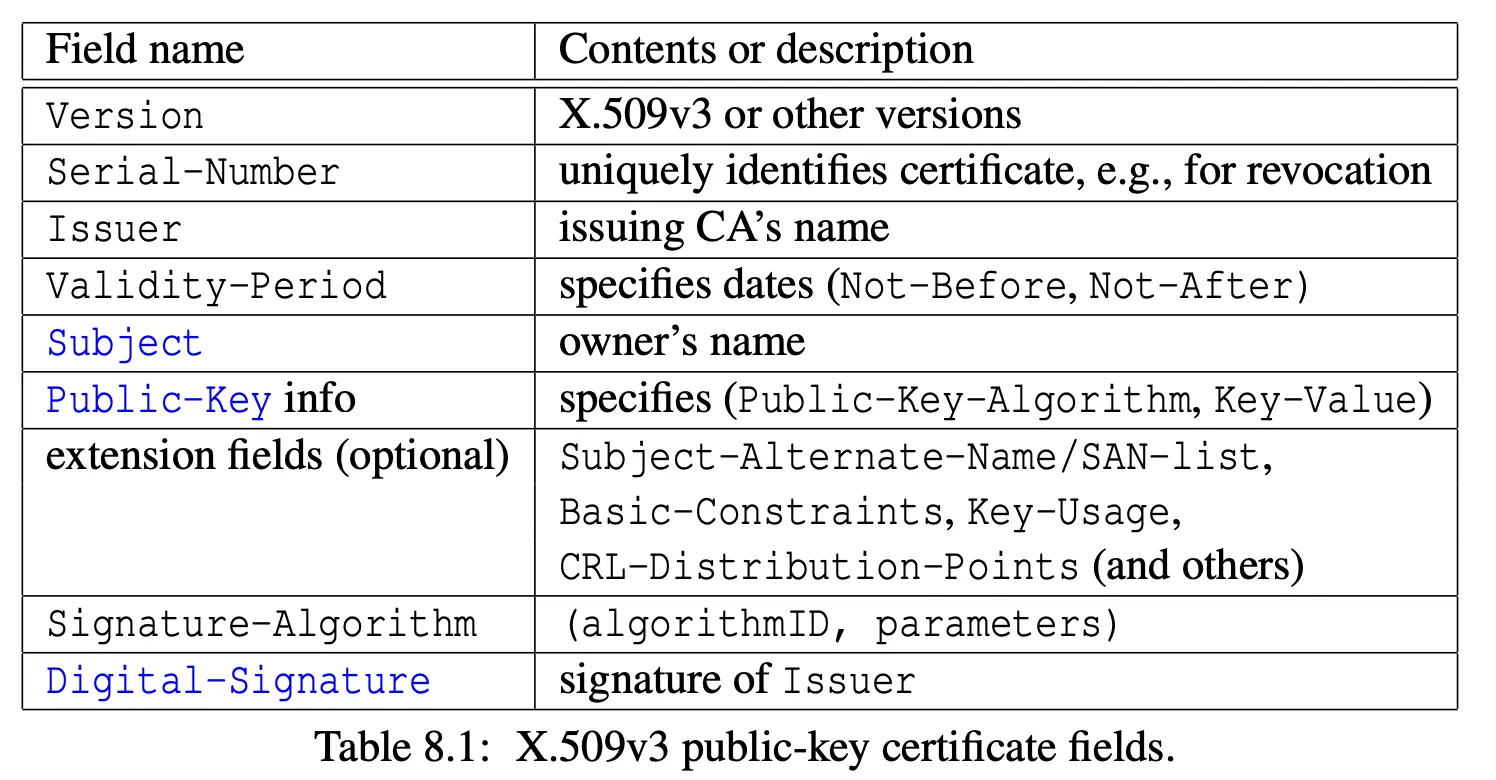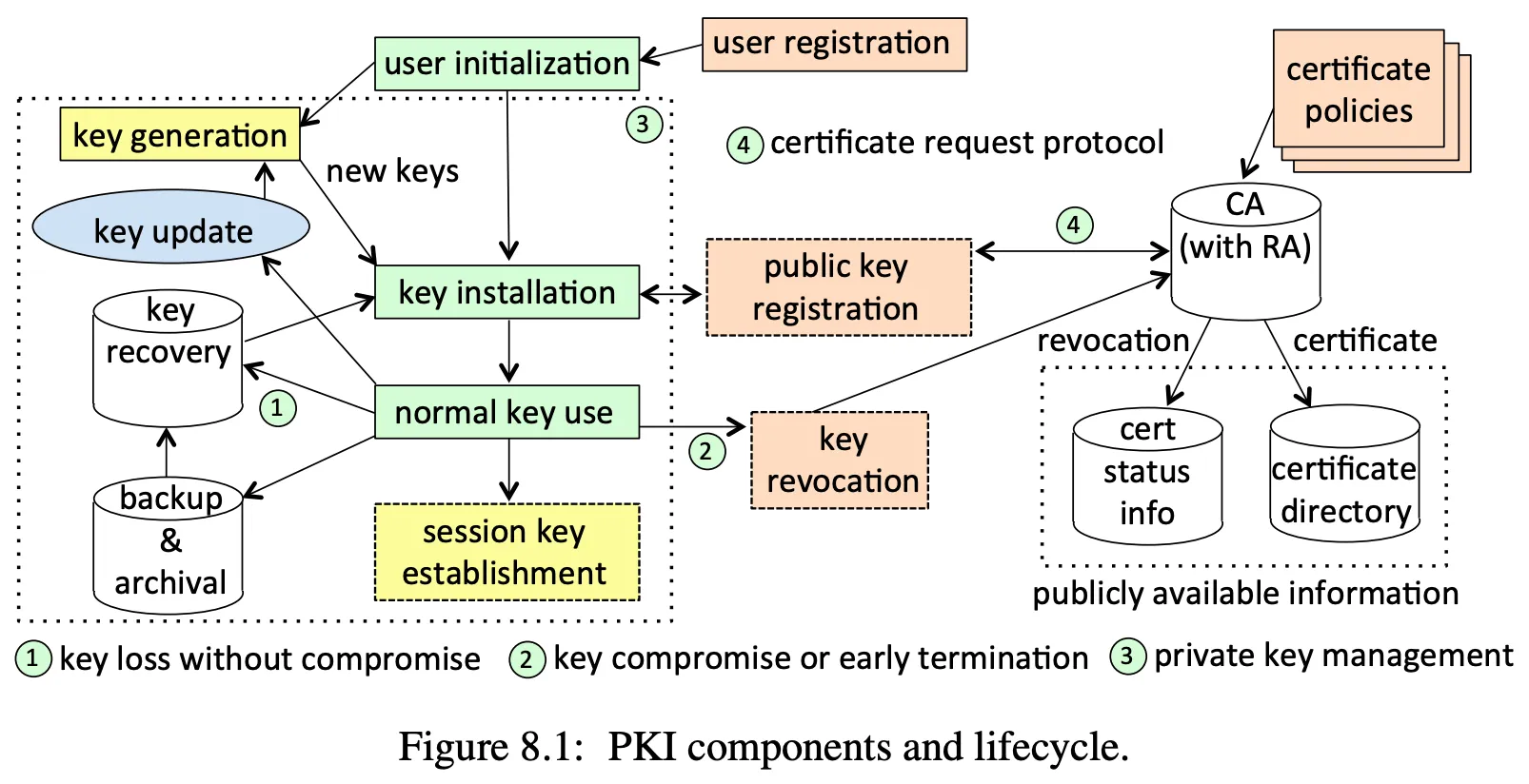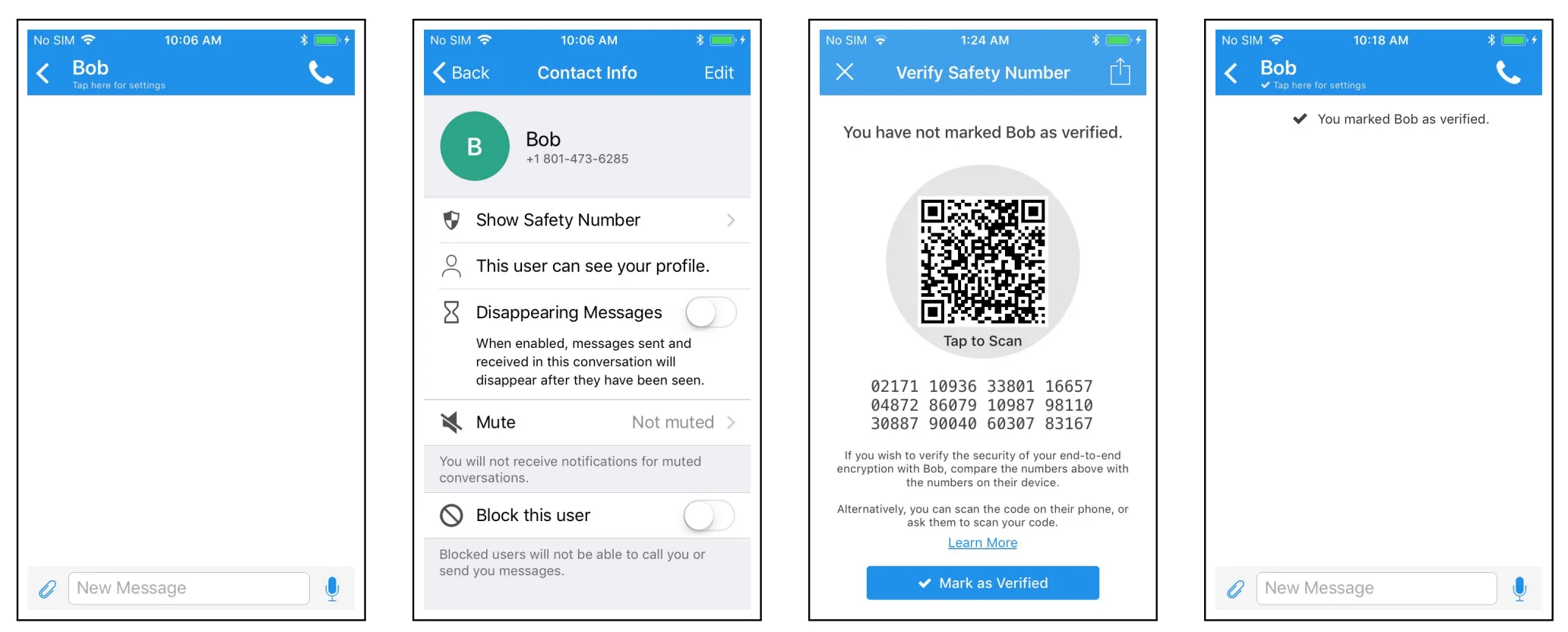Certificates
Introductions
- introductions of two students
Questions on the readings
The readings today are from Computer Security and the Internet, Chapter 8, sections 8.0-8.3, 8.5.
Public key certificates
-
a public key certificate associates a public key with an owner
- combination of Subject and public key signed by a Certification Authority (CA)
- a relying party relies on this certification authority and trusts its signature
-
we typically use a set of standards from the International Telecommunication Union (ITU) — X.509

Issuing a certificate
-
Certificate Authorities (CAs) can issue certificates for humans, computers
- web: issue to a web server to certify a public key is associated with a hostname
- email: issue to a person to certify a public key is associated with an email address
- code signing: issue to an organization to certify a public key is associated with that organization (name, location, company officer)
-
evidence needed to issue a certificate include
- ownership of the key using challenge/response
- ownershp or control of the entity in the Subject field (email address, web server, organization)
- affiliation with a named legal entity
-
can easily get a website certificate for free with Let’s Encrypt
- It uses a protocol called ACME to automatically verify you own a domain
- For example, you contact an ACME server to request a certificate, and it gives you a file to serve from your website, once it verifies that you are serving it, then it issues you the certificate
- see Let’s Encrypt Stats
Verifying a certificate
- anyone can sign their own certificate, called a self-signed certificate
- but it won’t necessarily be trusted!
- the web uses a CA-based trust model:

- we use a trust model that assumes some trust anchors (trusted certificates)
are shipped with browsers and operating systems
- called a trusted certificate store or root store
- each CA can forms a root of trust
- other trust models are possible! the book covers some of them

-
Validating a certificate chain
- obtain a certificate chain
- you may have only the leaf or you may be given a partial chain
- trace signatures back to a root and look up certificates as needed
- for each certificate
- check that it is not expired and is current
- check that it is not revoked (see below)
- check that the signature is valid using the signing CA’s public key
- use is consitent with constraints (see below)
- subject name matches semantics
- hostname signed is the hostname the user is visiting in the browser
- email address that is signed is the email subject
- signing CA either has a public key that is trust anchor, or repeat above steps until reaching a trust anchor
- obtain a certificate chain
-
constraints
- basic constraints
- includes whether the public key is for a CA (and thus can sign other certificates), otherwise it is a leaf certificate
- includes a chain length, 0 means the CA can only issue leaf certificates
- key usage
- allowed uses, e.g. for signatures, encyption, key agreement, revocation list signatures, code signing
- subject alternate name
- various alternative aliases (other email addresses, other domain names or IP addresses)
- name constraints
- constrains what a CA can sign for (e.g. only .com or only .byu.edu domains)
- basic constraints
Revoking a certificate
-
needed in case
- a private key is stolen
- a private key is lost
- changes to name or organization
- new key pair
-
Certificate Revocation List (CRL)
- issued by a CA
- contains a list of all unexpired but revoked certificates
- can be fetched by a browser / RP periodically
- major drawback is size, especially for mobile devices
-
Online Certificate Status Protocol (OCSP)
- allows a browser / RP to check the revocation status of a certificate
- major downside is privacy concern
- CAs now have knowledge of your browsing habits
- note, ISPs already have this
- another major concern is “failing open”
- if fetching OCSP status fails, the browser still visits the site (otherwise users are unhappy)
- this makes it easy for an attacker to deny access to OCSP and thus carry out an attack with a revoked certificate
- another concern is delay
- OCSP stapling
- a web server gets a signed, timestamped certificate of the validity of the certificate
- provides this to the web browser when fetching its certificate
- eliminates the delay concern
- stapling can still be deleted/removed by an attacker, leading to the “failing open” problem
- web sites can use “OCSP must staple” in their certificates, indicating that if the staple is stripped, that is a problem
- attacker can still strip it and cause denial of service
- website owners can mess it up and cause outage for customers
-
current approach is to use compressed CRLs or CRL sets
-
not clear whether mobile devices use revocation at all
PKI
- public key infrastructure (PKI) is used for managing public keys, private keys, and their use

-
includes all aspects of using public key cryptography, from generation, to bootstrapping session keys, certificates, revocation
-
several challenging elements
- long term storage of private keys is challenging
- particularly for individuals
- critical websites may use offline storage, but many use online storage
- backup and recovery typically needed
- revocation (see above)
- public key distribution and verification for people (websites use the CA hierarchy)
- long term storage of private keys is challenging
Alternatives to the web model
- Signal
- verify public keys using an out-of-band channel
- most users have no idea this exists or what it is for

-
Web of Trust / PGP
- sign keys of people you meet and verify, perhaps at key signing parties
- pass these along to your friends
- decide individually who you trust
- just those you verified yourself
- friends of friends
- friends of friends of friends?
- generally a failure
-
Trust on First Use (TOFU)
- accept a public key the first time you get it
- look for key continuity, e.g. warn users if keys change so they can verify
- autocrypt appears to be making some progress putting this into open source email systems
- TOFU is also often used with SSH servers
Class Exercise
- use Chrome to inspect website certificates
Extra reading
-
Let’s Encrypt
-
Let’s Encrypt: An Automated Certificate Authority to Encrypt the Entire Web
-
Certificate warnings
-
Mistakes in certificate validation
-
OCSP
-
see Is the Web Ready for OCSP Must-Staple? for a good explanation of OCSP stapling issues
-
see High-reliability OCSP stapling and why it matters for Cloudflare’s attempt to push OCSP stapling
-
see Intent to End OCSP Service for why Let’s Encrypt ended support for OCSP in 2024
-
-
Revocation